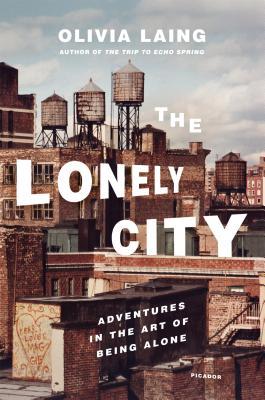What do you think?
Rate this book


336 pages, Hardcover
First published March 1, 2016

Loneliness feels like such a shameful experience, so counter to the lives we are supposed to lead, that it becomes increasingly inadmissible, a taboo state whose confession seems destined to cause others to turn and flee. … [L]oneliness inhibits empathy because it induces in its wake a kind of self-protective amnesia, so that when a person is no longer lonely they struggle to remember what the condition is like.
“Loneliness seems to be such a painful, frightening experience that people do practically everything to avoid it….Loneliness, in its quintessential form, is of a nature that is incommunicable by the one who suffers it.”Exactly, exactly, exactly, I want to say as I turn my attention away. It makes me uncomfortable, suffering from it or not. So why, then, does Laing want to write a book about loneliness?
"Sameness, especially for the immigrant, the shy boy agonisingly aware of his failures to fit in, is a profoundly desirable state; an antidote against the pain of being singular, alone, all one, the medieval root from which the work lonely emerges. Difference opens the possibility of wounding; alikeness protects against the smarts and slights of rejection and dismissal."Laing does not neglect Valerie Solanas, the shooter who nearly ended Warhol’s life, who was also “drawn to the excessive and neglected.” Solanas’s work on the SCUM Manifesto puts her smack dab in the middle of a resurgent feminist movement, and yet decidedly outside the mainstream headed by Betty Friedan.
"It was the rawness and vulnerability of [Wojnarowicz’s] expression that proved so healing to my own feelings of isolation: the willingness to admit to failure or grief, to let himself be touched, to acknowledge desire, anger, pain, to be emotionally alive. His self-exposure was in itself a cure for loneliness, dissolving the sense of difference that comes when one believes one’s feelings or desires to be uniquely shameful."Laing’s skill on this difficult subject of outsider art keeps us curious and bearing our discomfort as she leads us to a deeper understanding of our human condition.
"Loneliness is personal, and it is also political. Loneliness is collective; it is a city…the pursuit of individual happiness does not trump or excuse our obligations to each other. We are in this together…What matters is kindness; what matters is solidarity. What matters is staying alert, staying open…"
I'd never been comfortable with the demands of femininity, had always felt more like a boy, a gay boy, that I inhabited a gender position somewhere between the binaries of male and female, some impossible other, some impossible both. Trans, I was starting to realise, which isn't to say I was transitioning from one thing to another, but rather that I inhabited a space in the centre, which didn't exist, except there I was.
I wanted to be in contact and I wanted to retain my anonymity, my private space. I wanted to click and click and click until my synapses exploded, until I was flooded by superfluity. I wanted to hypnotise myself with data, with coloured pixels, to become vacant, to overwhelm any creeping anxious sense of who I actually was, to annihilate my feelings. At the same time I wanted to wake up, to be politically and socially engaged. And then again I wanted to declare my presence, to list my interests and objections, to notify the world that I was still there, thinking with my fingers, even if I'd almost lost the art of speech. I wanted to look and I wanted to be seen, and somehow it was easier to do both via the mediating screen.
"You can be lonely anywhere, but there is a particular flavour to the loneliness that comes from living in a city, surrounded by millions of people. One might think this state was antithetical to urban living, to the massed presence of other human beings, and yet mere physical proximity is not enough to dispel a sense of internal isolation."
"Amidst the glossiness of late capitalism, we are fed the notion that all difficult feelings — depression, anxiety, loneliness, rage — are simply a consequence of unsettled chemistry, a problem to be fixed rather than a response to structural injustice or, on the other hand, to the naive texture of embodiment, of doing time, as David Wojnarowicz put it, in a rented body, with all the attendant grief and frustration that entails."Beautiful, lucid and deeply poignant, the emotions and insight that flare throughout every reading of The Lonely City remind me of Fernando Pessoa, my favourite literary 'outsider', and the only one whose sense of abandonment and disquiet could touch and resonate with my own — until now, that is.